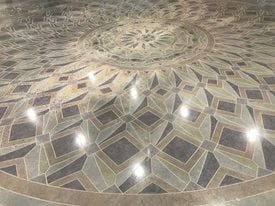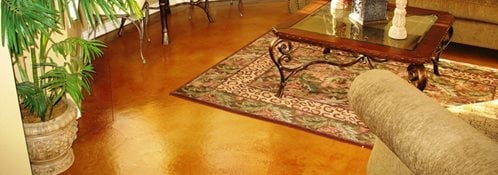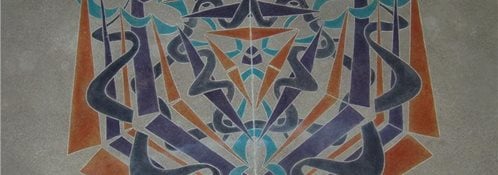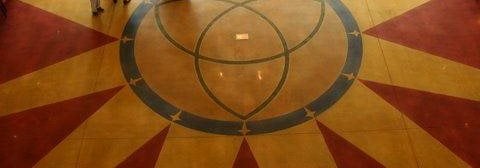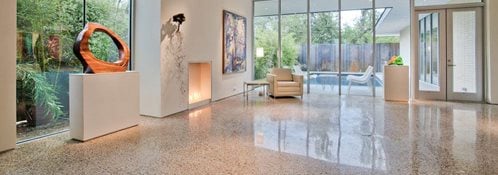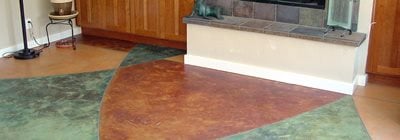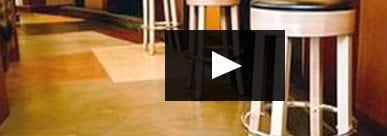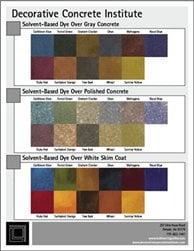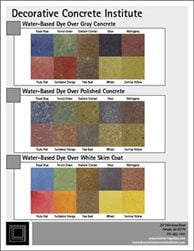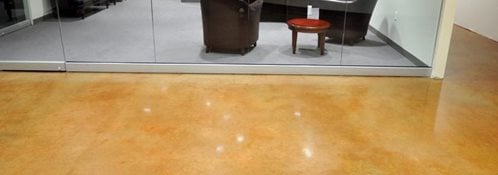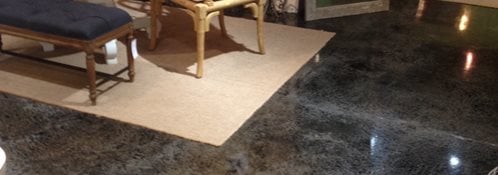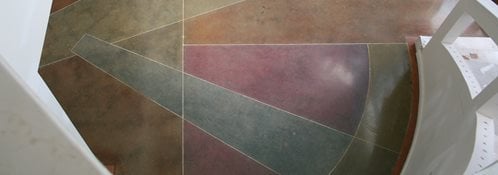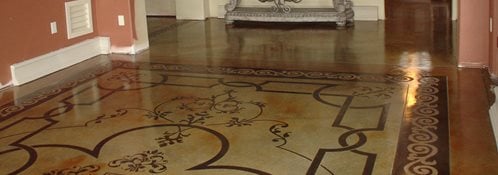More decorative contractors are using dyes to rev up their color palettes. Dyes are available in tones more vibrant than possible with most stains, such as red, yellow, orange, purple and cobalt blue. And the colors can easily be mixed at the jobsite or diluted to obtain a multitude of other shades.
Most dyes are packaged in concentrated form, allowing flexibility in the end color. They can be used full strength to attain greater depth of color or diluted with water or solvents to produce paler shades or simply a light wash of color. You can also intermix different colors of dye to produce your own custom hues.
CONCRETE DYE VS. STAIN

Dana Boyer, owner of Concretizen, uses concrete dyes as a normal part of her concrete flooring projects.
Dyes are nonreactive and impart color by penetrating concrete or other porous cementitious surfaces. They are much smaller in particle size than chemical stains or acrylic stains, thus allowing for easier penetration and color saturation while leaving less residue on the surface. The small dye particles fill the pores of the concrete and are very hard to remove, making dyes nearly as permanent as stains.
Dyes are available in water- or solvent-based formulations and produce looks ranging from opaque to translucent, depending on their application. Water-based dyes produce more marbling, while solvent-based dyes tend to be more uniform in color. Some water- and solvent-based dyes can be combined to produce special color effects. Dyes are not UV stable, so they are mostly recommended for indoor use.
Stains react chemically with the calcium hydroxide in concrete to impart color onto the surface. Their semi-transparent colors are mostly limited to earth-tones, though some more vibrant colors are available in water-based stains. Stains are UV stable, and can be used both indoors and outdoors.
Les Davis, developer of BRICKFORM'S Pro-Dye Plus had this important comment about concrete dyes: Translucent dyes penetrate the concrete drying in less than one minute in most climates with minimal cleaning required following the application. Therefore, the applicator completes the job about 60% faster than a typical acid stain due to reduced dry time and less cleaning.
CONCRETE DYE COLORS
Dyes take the color vibrancy up another level. Often used on polished concrete floors or to make bold graphics, logos or stenciled designs.
Sample color charts:
Here is a sample of possible colors for concrete using concrete dyes.
